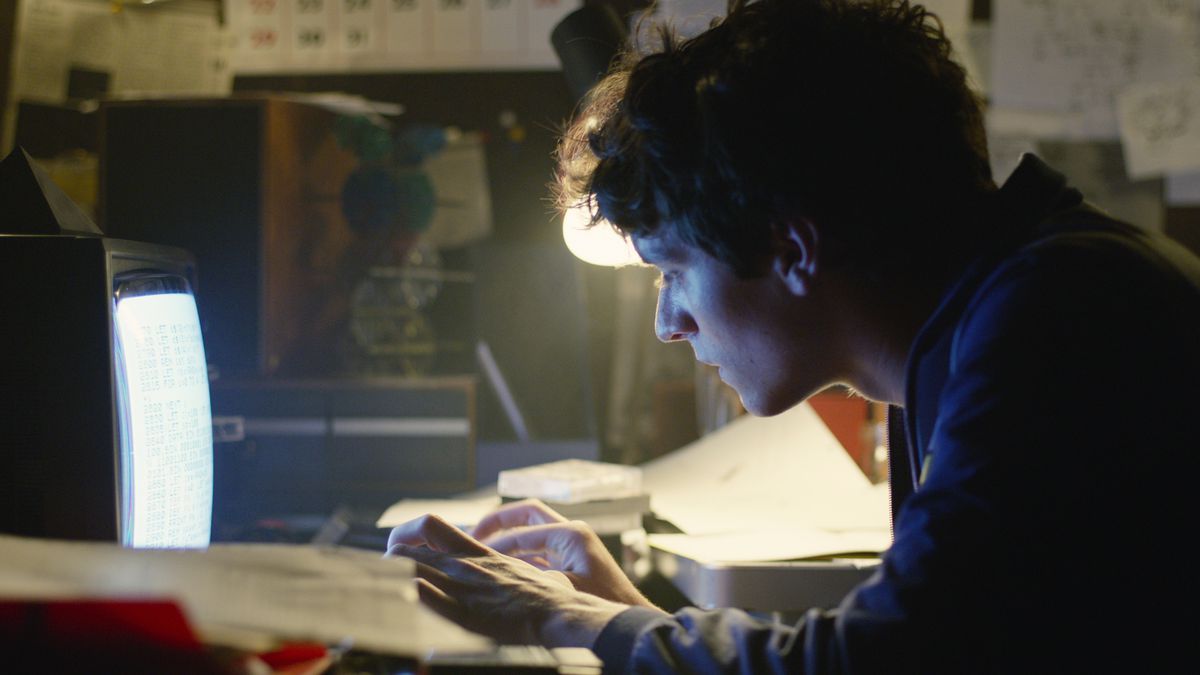Named after Lewis Caroll’s nonsensical beast, Charlie Brooker’s ‘Bandersnatch’ gives the
audience control and encourages them to lead a young game designer named Stefan down a
macabre rabbit hole of life or death choices and bad decisions as he attempts to create his
Magnum Opus. The feature’s selling point, however, isn’t the story itself but rather the way that
the story is told. Instead of playing as a traditional movie, ‘Bandersnatch’ hands certain choices
Stefan has to make over to the audience, letting them explore the feature’s five hours of footage in
a manner not unlike the ‘choose-your-own-adventure’ game Stefan himself is working on. At first,
these choices seem insignificant, the difference between breakfast cereal or what music to listen
to, but it soon becomes apparent that even small decisions can have large and even disastrous
consequences.
Every Black Mirror episode has a point to make, and Bandersnatch no exception to this trend. But
where the series revels in taking technological concepts to their logical extreme and hitting the
viewers round the head with the upsetting results, ‘Bandersnatch’ seems to come off as a “look
what we can do” with only a light jab of misery as it showcases the idea and implementation of an
interactive movie itself.
But what does interactivity actually mean for a movie such as Bandersnatch? And what are the
implications it has for the wider entertainment market in general? Well for a start it lets ambitious
creators like Brooker create fragmented and unique stories with a lot more freedom than
traditional media allows. These can then be explored by an audience given the agency to uncover
story elements and extra scenes through their decisions. Furthermore, certain concepts such as
free will and interactivity can only be explored in through an interactive medium where the audience is given some agency. But this agency comes at the cost of requiring a lot more time, attention, and energy from its audience than traditional media; potentially turning a lot of people off in the process.
With potential creators and consumers of this newly showcased interactive media considering its
pros and cons, executives in the industry will be undeniably sizing it up for profitability. At first
glance this doesn’t look good for the future of interactivity in media, as the resultant increase in
the amount of footage that has to be recorded will inevitably lead to a rising number of costs.
However there are also a number of potential benefits to counterbalance this; for example an
interactive story is much harder to pirate as the pirate can’t just steal and re-upload the raw
footage as is the norm. On top of this, companies would also have the technologies at their
fingertips to, for example, track which cereals or music people prefer through their decisions and
adapt their viewing or marketing experiences suitably. Through methods such as these
companies would be able to turn interactive experiences into profitable ones, downplaying the
cries of those who claim that ‘Bandersnatch’ could never be more than a one off or that it offers
no viability in the current entertainment market.
Aside from the excitement of a technological showcase and the viability of an interactive medium
in the future, the question still stands; “Is ‘Bandersnatch’ actually a good movie?”. Whilst it seems
unfair to review it as a typical film, Bandersnatch’s demand for attention can be a turn off to a
viewer unaware of the time and energy it demands to experience the story in full. Despite this the
overall experience comes together with a cohesive satisfaction; different paths in the narrative
build towards an overall story unique to the viewer but equal to its counterparts. When the final
credits roll and the audience find themselves out of options, they’re left with equal parts delight
and shame. They’ve been invited to guide a rat through a maze towards its inevitable demise in a
multitude of ways and at the end of it all, they realise the only real monster in the tale was them.
Them and Charlie Brooker, who must watch the waves Black Mirror makes from a padded cell in
his mansion, wondering which path to take to horrify and entertain us next.
Matthew Jeffery
Image credit: Netflix / TheVerge.com

